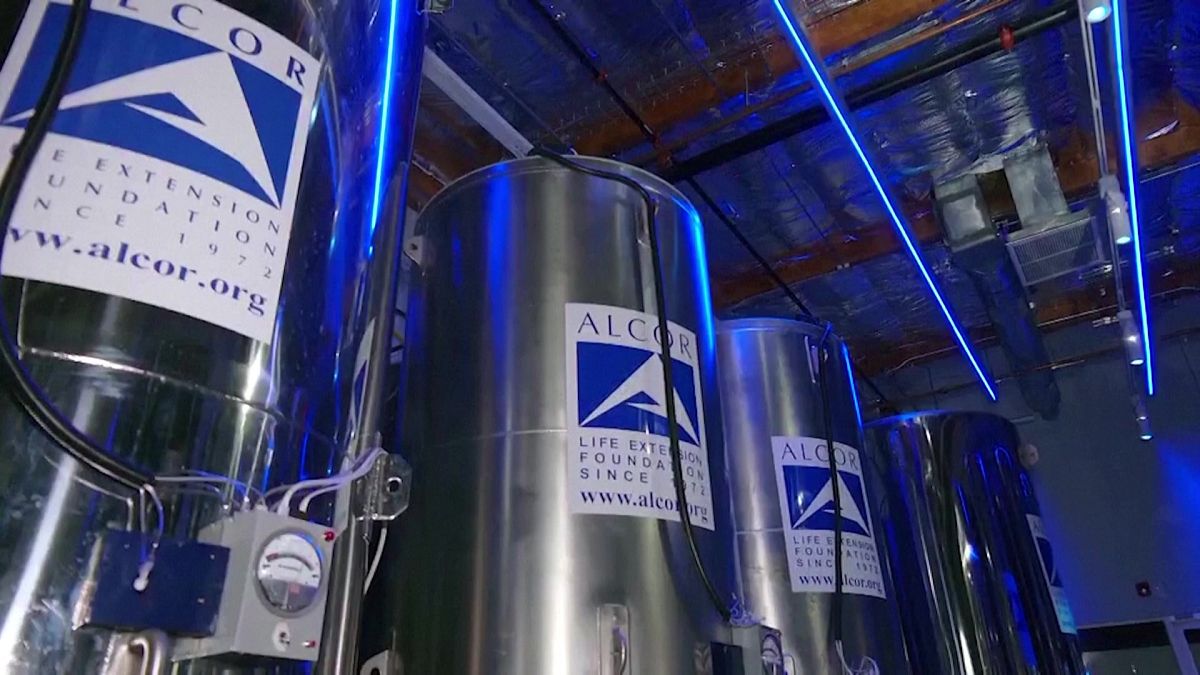This American cryonics facility has preserved "patients" in liquid nitrogen-filled tanks until a future date when technology allows them to be thawed.
On the wall full of patients' portraits is Matheryn Naovaratpong from Thailand who lost her life at an early age.
"[She is] by far our youngest patient, not quite three years old... who had brain cancer. Both her parents were doctors and she had multiple brain surgeries and nothing worked, unfortunately," said Max More, President emeritus of the cryonics facility Alcor Life Extension Foundation in Arizona, the United States.
According to More, the facility currently accommodates 199 people and almost 100 pets inside tanks filled with liquid nitrogen in hopes to revive them when technology has been advanced enough to treat them.
He says the patients are only "legally dead" but not biologically and believes cryonics could be their saviour.
The process is a lot more complicated than just freezing and defrosting.
After the patient has been declared legally dead, the body will be soaked in an ice bath.
During this procedure, a mechanical CPR device is used to ensure blood circulation and medications in order to protect the cells against damage.
More says this prevents the patient from returning to consciousness and blood clots. He also adds maintaining blood pressure is crucial for viability, much as in the organ donation process.
He says the bodies are not technically frozen, but vitrified.
"We don't want to freeze the patient. We want to vitrify them... And the reason is that once you cool to very cold below freezing, the solution, instead of crystallising, will just get thicker and thicker and it's like a glassy block holding all the cells in place without any internal structure and so does no damage," said More.
"And once we reach that point, around minus 110 degrees, the body becomes truly solid and absolutely nothing is happening in the body. There's no biochemical activity whatsoever, certainly no neurological activity. So at that point, it doesn't matter whether you wait a day or 100 years, you're going to be just the same as when you started".
'Pretty science fiction and naive'
More’s wife, futurist and author Natasha Vita-More believes those who opted in for cryopreservation won’t be lonely once revived.
"(They) will most likely have family members and or friends who have also signed up for cryonics… A person who had cancer or ALS or some other type of injury or disease is revived. The disease or injury cured or fixed, and the person is, has a new body cloned or a whole body prosthetic or their body reanimated and meet up with their friends again," she said.
For Dr Arthur Caplan, Director of the Division of Medical Ethics and a professor of Bioethics at the New York University Grossman School of Medicine, the idea of cryonics is no more than “a college dormitory discussion”.
"So, at the end of the day, I think this notion of freezing ourselves into the future is pretty science fiction and it's naive," he said.
"It's almost like what you'd be thinking about in a college dormitory discussion, 'if I could just freeze myself and then defrost myself kind of like a bag of peas and wind up way in the future, wouldn't that be cool?' Sounds okay, but then you realise how much we are products of our own time," Caplan added.
For more on this story, watch the video in the media player above.



